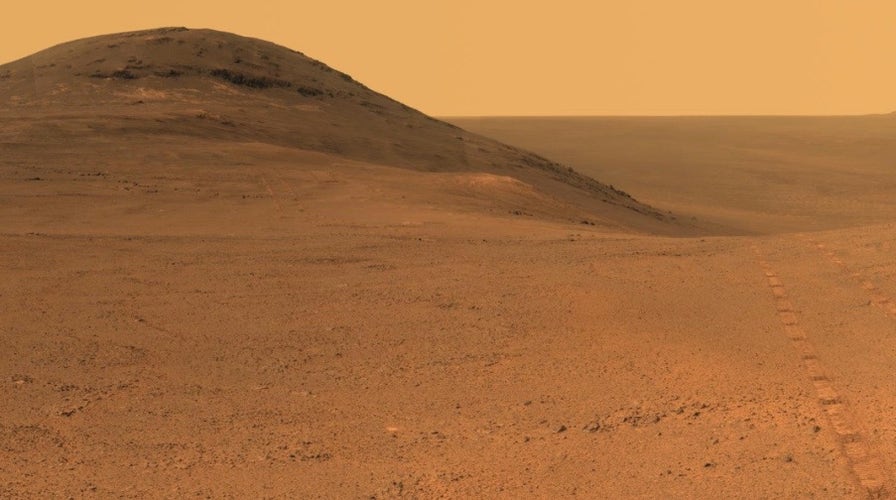Fox News Flash top headlines for February 17
Fox News Flash top headlines are here. Check out what's clicking on Foxnews.com.
The countdown has begun as NASA's Mars rover Perseverance prepares to land on the red planet.
Perseverance will be the agency’s fifth rover to land on Mars, and engineers managing the mission at the NASA Jet Propulsion Laboratory in Southern California said that the rover was on track to descend at Mars' Jezero Crater at approximately 3:55 p.m. ET on Thursday.
Scientists picked the 28-mile-wide crater after a five-year study of more than 60 potential sites, as they believe the crater was once flooded with water and home to an ancient river delta more than 3.5 billion years ago.
Landing on Mars is risky and around half of all previous Mars landing attempts have succeeded. Jezero Crater's topography -- which also includes cliffs, sand dunes and boulder fields -- only increases the difficulty of the mission.
This time, however, the Perseverance team is reportedly "employing new technologies" in order to be able to target the rover's landing site with more accuracy.
That said, there is plenty of room for error -- especially during what is known as the "seven minutes of terror."
The spacecraft that is flying Perseverance will separate from its entry capsule, enter the planet's atmosphere traveling at around 12,100 mph, deploy its parachute at supersonic speed, detach the bottom of the entry capsule enabling the use of radar and Terrain-Relative Navigation, separate the back half of the capsule and deploy the rover's "jetpack," and touchdown using the sky crane maneuver at human walking speed.
It's a dance with precise steps, but a multitude of factors can impact the timing of the landing, including the conditions of the atmosphere and the complexity of deep-space communications -- though Perseverance can land without communications with Earth.
Once on Mars, the rover will photograph its new home -- sending images back to Earth via NASA's Mars Reconnaissance Orbiter -- and ultimately attempt to document proof of ancient microbial life on Mars.
NASA TEST FOR 'MOST POWERFUL ROCKET IN THE WORLD' HAS COMPONENT FAILURE
The mission carries more cameras than any interplanetary mission in history, with 19 on the rover and four on other parts of the spacecraft.
This will also be the first mission to collect and cache Martian rock and sediment for later return to Earth.
Perseverance is also ferrying a helicopter named Ingenuity: the first aircraft to attempt powered, controlled flight on another planet.
As the most advanced rover to date, Perseverance was named with a purpose, and to the right of the middle wheel is a plaque that commemorates the impact of the COVID-19 pandemic and pays tribute to health care workers around the globe.
To watch the landing and listen to commentary from experts, viewers can tune in to NASA TV at 2:15 p.m. ET.
CLICK HERE FOR THE FOX NEWS APP
"This landing is one of those pivotal moments for NASA, the United States, and space exploration globally – when we know we are on the cusp of discovery and sharpening our pencils, so to speak, to rewrite the textbooks," Acting Administrator Steve Jurczyk told Fox News.
"The Mars 2020 Perseverance mission embodies our nation’s spirit of persevering even in the most challenging of situations, inspiring, and advancing science and exploration. The mission itself personifies the human ideal of persevering toward the future and will help us prepare for human exploration of the red planet in the 2030s," he said.





















